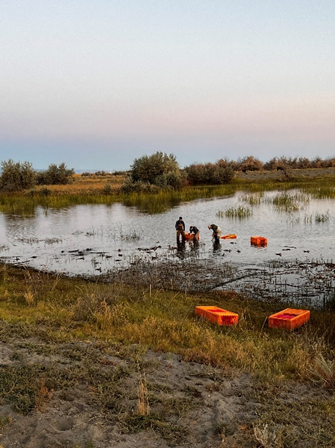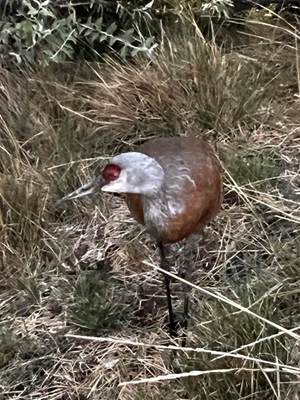Washington’s waterfowl habitat improvement projects showing great results
Thanks in large part to waterfowl hunters

Waterfowlers in Washington have another month to take advantage of most migratory waterfowl seasons and some amazing and nationally-known hunting locations in the state. In an article titled 10 Great Cities for Waterfowlers, conservation group Ducks Unlimited (DU) listed Seattle as the number one city in the nation for having the best waterfowling within a short drive of the metropolitan area.
And it’s not just the Seattle area that offers amazing waterfowl hunting opportunities in our state, there are some exceptional options in central Washington and several other areas as well. Some of that is due to Washington being a critical crossroads for an enormous number of ducks, geese, and other migratory birds traveling from breeding areas to the north to feeding areas in the south. And some of it is because of the work that has gone into building great waterfowl habitat, with the support of a lot of conservationists.
Washington is within the Pacific Flyway- a kind of bird highway in the sky. It is one of four major North American migration routes for birds, extending from Alaska and Canada through California to Mexico and South America. Birds follow ancestral patterns as they travel the flyway on their annual north-south migration.
Just like humans, birds need rest stops to recharge and refuel. Our state provides that with wetland habitats that host more than 35 species of migratory ducks, geese, swans, and other wetland-dependent species. Washington’s wetlands sustain not only our local waterfowl populations, but birds that breed in Alaska, western Canada, and even Russia. Without this network of wetlands across the state and flyway, waterfowl and other bird species would not be able to make this annual trip and Washingtonians would miss out on the spectacle that is migration.

Many of those wetlands are also famous waterfowling areas. The Columbia Basin, the Skagit Valley, and regions along the entire extent of the Columbia River are a few of those areas.
Many of the state’s public hunting areas with wetlands have been acquired or benefitted from the money that waterfowl hunters put into the system through federal and state Migratory Bird Hunting and Conservation Stamp programs; commonly known as “Duck Stamps”. Duck Stamps are literally that- stamps with art depicting waterfowl species and wetland scenes on them, but they also have other functions. The federal stamp is a requirement for hunters to participate in waterfowl seasons in Washington. The artwork on the stamp serves as both a collector item, and more importantly, as a reminder about the investment in conservation to keep wetlands and waterfowl plentiful in Washington and across the Pacific Flyway.
The Federal Migratory Bird Hunting and Conservation Stamp is one of the oldest ways to support bird habitat conservation. President Franklin D. Roosevelt signed the Migratory Bird Hunting Stamp Act in 1934. Since then, it has raised more than $950 million to acquire and protect wetland habitat and purchase conservation easements for the National Wildlife Refuge System. Duck Stamp dollars also help purify water, aid in flood control, reduce soil erosion and sedimentation, and enhance outdoor recreation.
In Washington State, the Migratory Waterfowl and Wetland Conservation Stamp and Artwork legislation was signed into law in 1985 and has raised more than $10 million. This legislation established a Washington Duck Stamp, which was initially required to hunt migratory waterfowl, and an artwork program designed to generate revenue. In 2011, the legislation was amended and expanded to include all migratory game birds (waterfowl, coots, snipe, doves, band-tailed pigeons) under a permit validation rather than the physical Duck Stamp. The Migratory Bird Permit is now required for all migratory game bird hunters in Washington, and funds from it are used to improve wetland habitats and protect migratory game birds in the state. The Artwork is still produced, with revenue from sales going to WDFW projects or projects where the Department partners with nonprofit organizations to improve wetland habitat and benefit wetland-dependent migratory birds.
While waterfowl hunters account for the majority of people purchasing Duck Stamps, birdwatchers and photographers often purchase the Federal Duck Stamp to both support conservation and because it acts as a free pass into national wildlife refuges that charge an entry fee.
The dollars raised by Duck Stamp sales are often maximized by groups WDFW partners with, like DU. They are used to secure matching funds from other sources to complete projects that make improvements to wetland habitat.
For instance, WDFW and DU partnered to rejuvenate the Winchester Regulated Access Area on the Columbia Basin Wildlife Area in recent years, which had essentially become a non-functioning wetland.

The two entities worked in tandem to secure funds through the Washington State Duck Stamp program and then leveraged those funds to secure two separate North American Wetlands Conservation Act small grants. Combining those funds allowed the footprint of the project to be increased from 120 to 200 acres. While conducting annual banding of ducks in the area this year (for more information on duck banding see the video Duck Banding in Washington) biologists noticed that work done the past couple years is showing signs it was very successful, and not just for ducks!

As a result of this work, duck use of the area has increased and healthy flocks of state-listed sandhill cranes have also been using the area as a migratory stopover during both spring and fall. This only began after the project was completed. Additionally, as part of the wetland enhancement project, the adjacent uplands were enhanced with native plants to improve nesting habitat both for ground-nesting ducks and upland birds.
In Grays Harbor County, a State Duck Stamp-funded project replaced a rusted out water control structure on the Johns River Wildlife Area. These structures services fields where the Department contracts with area farmers to raise grain crops to provide food for waterfowl wintering in the area. Combining those funds allowed the footprint of the project to be increased from 120 to 200 acres.
Another project WDFW partnered with DU on was on eastern Washington’s Revere Wildlife Area. That project consisted of improving wetland conditions through water control and vegetation management. These improvements will benefit brood rearing and foraging habitat for several waterfowl species.
For more information on Washington’s Duck Stamp program and projects funded by it, check out the Migratory Waterfowl and Wetland Conservation Program story map. You can buy Washington State Duck Stamps and prints at washingtonduckstamp.com. Federal stamps and products can be purchased here.
